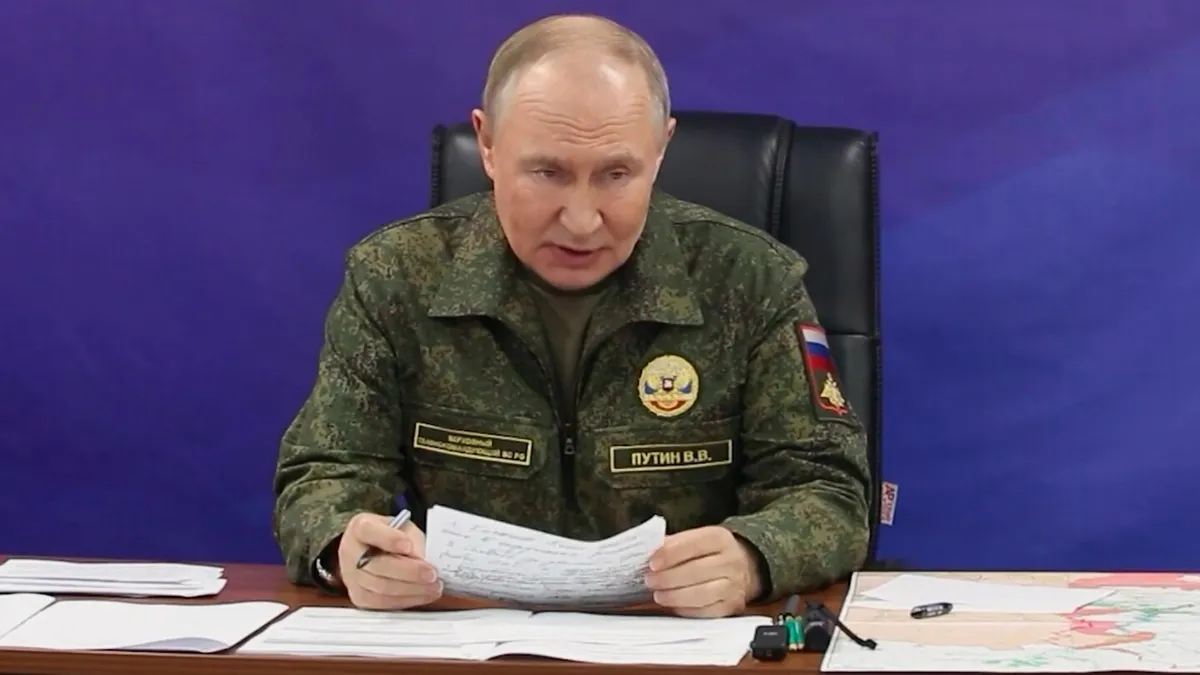
In a bold show of military strength, Russian President Vladimir Putin is utilizing nuclear drills and the recent successful test of the pioneering Burevestnik missile to deliver a clear message to U.S. President Donald Trump: Moscow will not be pressured into making concessions regarding Ukraine. Amid Trump's demand for a swift ceasefire and the imposition of new stringent U.S. sanctions targeting Russia's oil industry, Putin is reiterating the significance of Russia's nuclear arsenal to reinforce his steadfast demands. He insists that Ukraine must withdraw its forces from four illegally annexed regions and abandon its NATO aspirations—conditions that have been categorically rejected by Kyiv and its Western allies.
The Burevestnik, translating to "storm petrel" in Russian, is recognized as the world’s first nuclear-powered cruise missile. This innovative propulsion system grants it virtually unlimited range, enabling it to loiter for extended periods, maneuvering around enemy air defenses and striking from unexpected angles. Putin first unveiled the Burevestnik during his 2018 state-of-the-nation address, highlighting its capabilities to evade air defenses. Despite experiencing reported launch failures, development of the Burevestnik has persisted.
Recently, Russia's Chief Military Officer, General Valery Gerasimov, announced that an October 21 test of the Burevestnik was a resounding success. The missile reportedly traveled 14,000 kilometers (8,680 miles) over a 15-hour flight using nuclear fuel, demonstrating its advanced maneuverability to evade missile and air defense systems. Gerasimov emphasized that the missile is designed for guaranteed accuracy against highly fortified targets at any distance. While specific details remain undisclosed, Russian media suggests that the missile can fly as low as 50 meters (approximately 160 feet) to avoid radar detection.
Putin has directed Gerasimov to establish the necessary facilities for deploying the Burevestnik and to refine its operational modes. The Russian president has framed this missile as a direct response to the U.S. missile shield developed post-2001, following the withdrawal from a Cold War-era agreement limiting missile defenses. Russian military strategists harbor concerns that this missile shield could encourage Washington to contemplate a first strike, aiming to incapacitate a significant portion of Moscow’s nuclear arsenal while intercepting a limited number of retaliatory missiles.
The Burevestnik, along with the anticipated Poseidon nuclear-powered drone, are marketed as assured means of retaliation against any first strike. Unlike conventional cruise missiles, the nuclear-powered variant possesses an almost limitless range, capable of hovering over oceans for days before launching an attack from an unsuspecting direction. However, this technology presents significant challenges and potential radiation risks, leading the U.S. to abandon a similar project in the 1950s due to safety concerns.
Many Western analysts express skepticism regarding Russia's ability to successfully develop the Burevestnik, with some dubbing it a “flying Chernobyl” due to associated radiation hazards. A 2019 incident resulted in the deaths of at least five nuclear engineers in an explosion, suspected to have occurred during recovery efforts for a Burevestnik prototype that had crashed in the White Sea. Although Putin and Gerasimov did not disclose the test's location, Russia restricted access to a large area around the Arctic Novaya Zemlya archipelago, where previous Burevestnik tests occurred. Thankfully, the Norwegian Radiation and Nuclear Safety Authority reported no radiation spikes at monitoring stations, suggesting that the missile’s design may have mitigated radioactive contamination risks.
Putin has consistently showcased Russia’s nuclear capabilities since the onset of the full-scale invasion of Ukraine in February 2022, asserting that Moscow stands ready to employ “all means” necessary to safeguard its interests. His recent nuclear messaging coincides with Trump's postponement of a planned summit in Budapest and the announcement of new sanctions against Russia. Following Trump's declaration, Putin oversaw military drills encompassing all components of Russia's nuclear triad, showcasing the launch of ground- and submarine-launched intercontinental ballistic missiles, as well as cruise missiles fired by strategic bombers.
As tensions escalate, Putin has warned against any Ukrainian attempts to strike deep into Russian territory using Western-supplied weapons. He has also supported the Kremlin's decision to withdraw from a 2000 agreement with the U.S. regarding the disposal of Cold War-era weapons-grade plutonium, citing newfound anti-Russian actions that disrupt the strategic balance. While expressing a willingness to engage in dialogue with Trump regarding potential resolutions for Ukraine, Putin deemed the latest U.S. sanctions as an “unfriendly act” detrimental to bilateral relations. He stressed that Russia would not yield to intimidation, stating, “No self-respecting country and self-respecting people make any decisions under pressure.”
In a notable response to the Burevestnik test, Trump expressed frustration, stating, “You’ve got to get the war ended, a war that should have taken one week is now in its soon fourth year.” He emphasized the strength of the U.S. military, asserting that “we have a nuclear submarine, the greatest in the world, right off their shores,” underscoring that the U.S. does not need to engage in actions 8,000 miles away.
In conclusion, the ongoing developments surrounding the Burevestnik missile and Putin's nuclear posturing signify a complex interplay of military strategy, geopolitical tensions, and international diplomacy, with far-reaching implications for U.S.-Russia relations and the ongoing conflict in Ukraine.